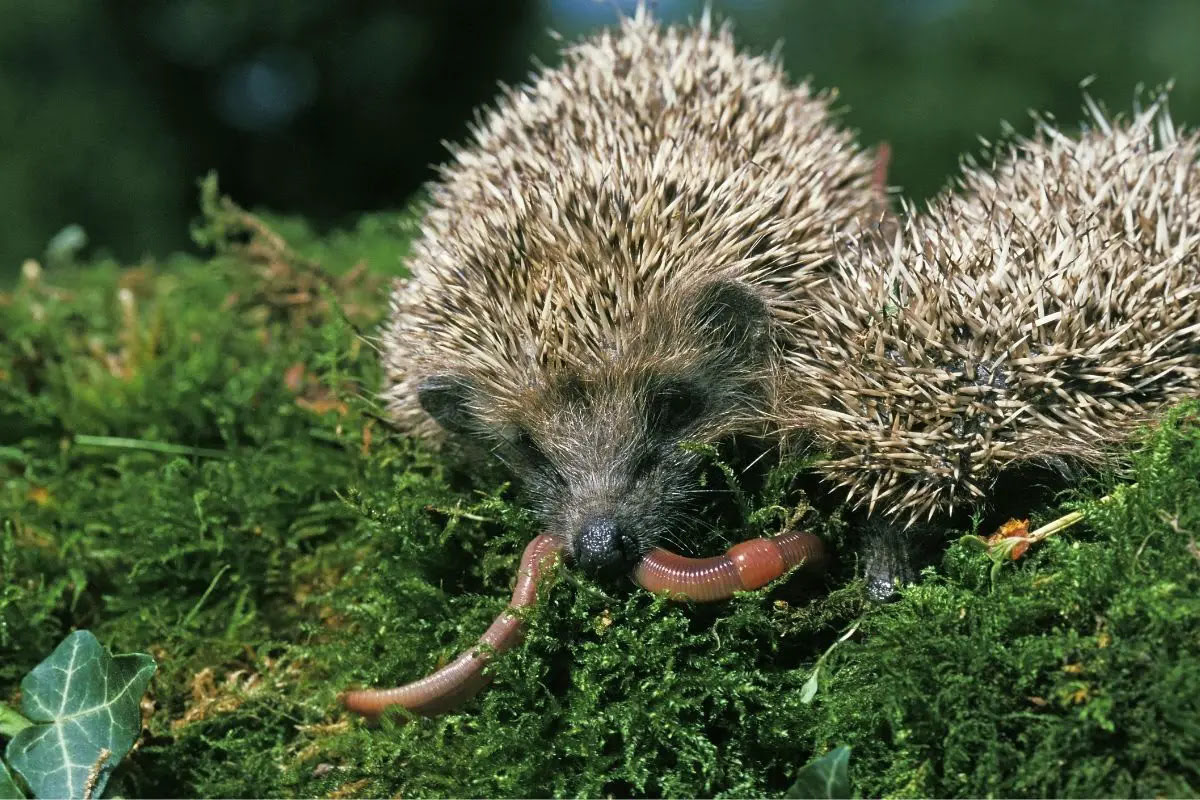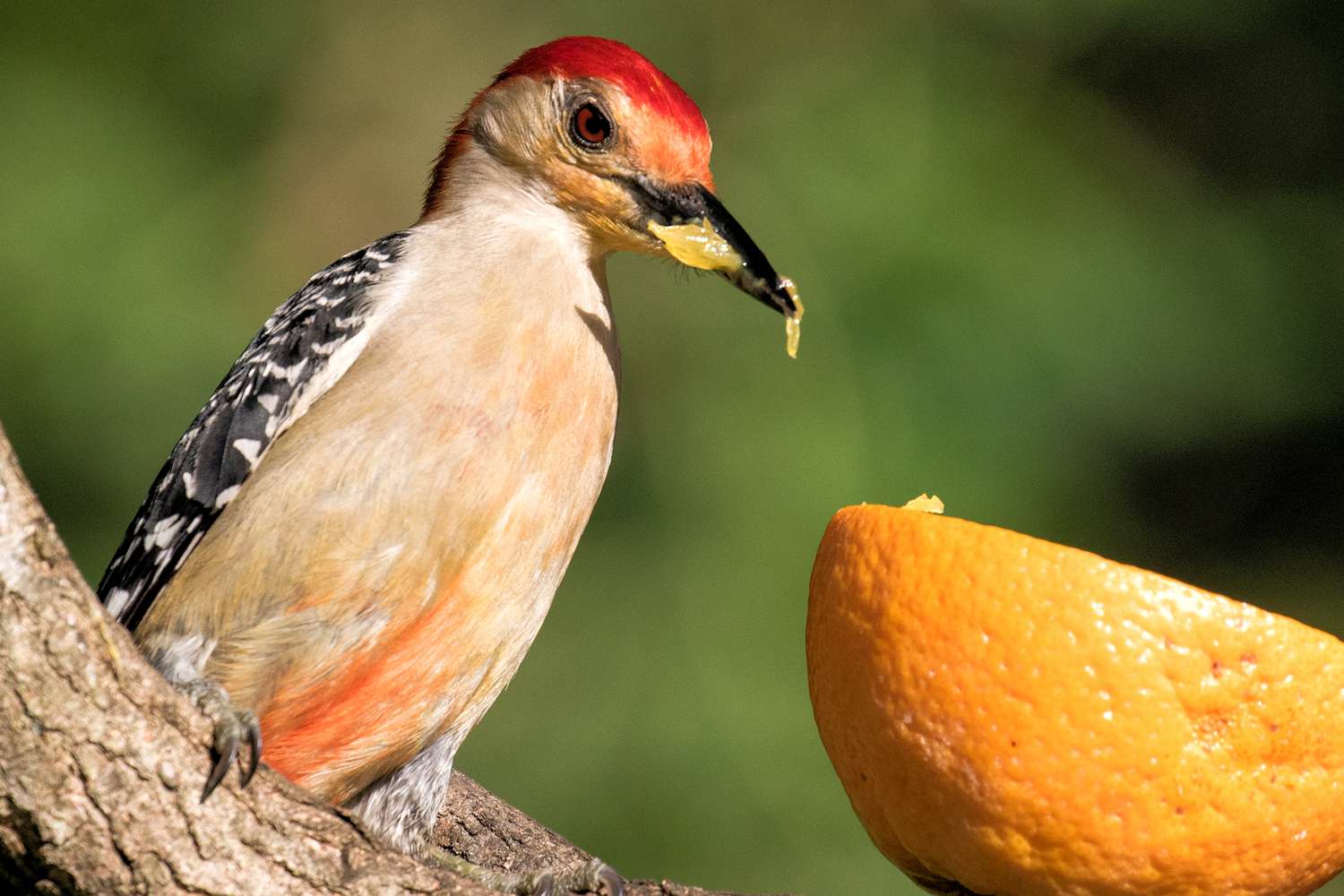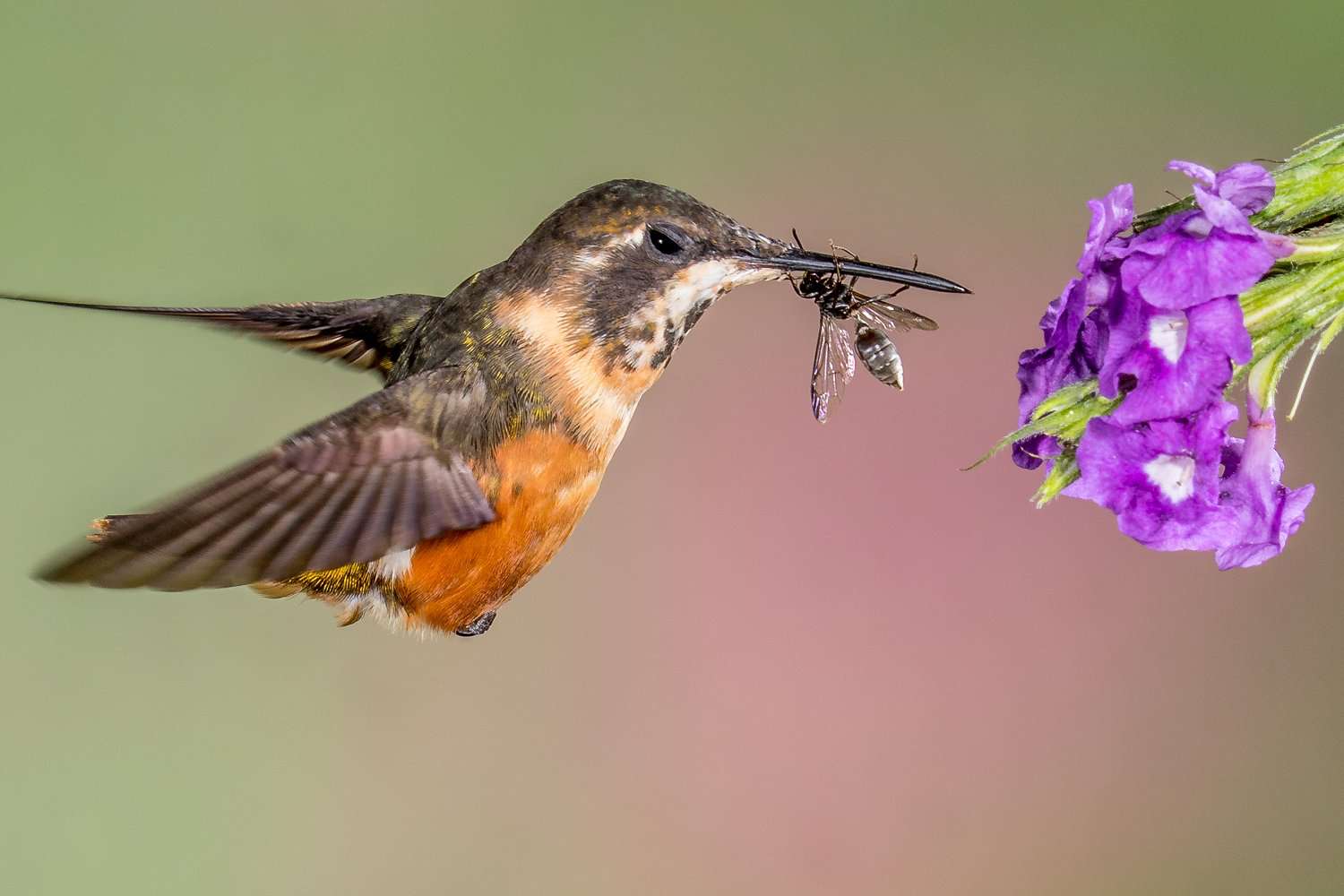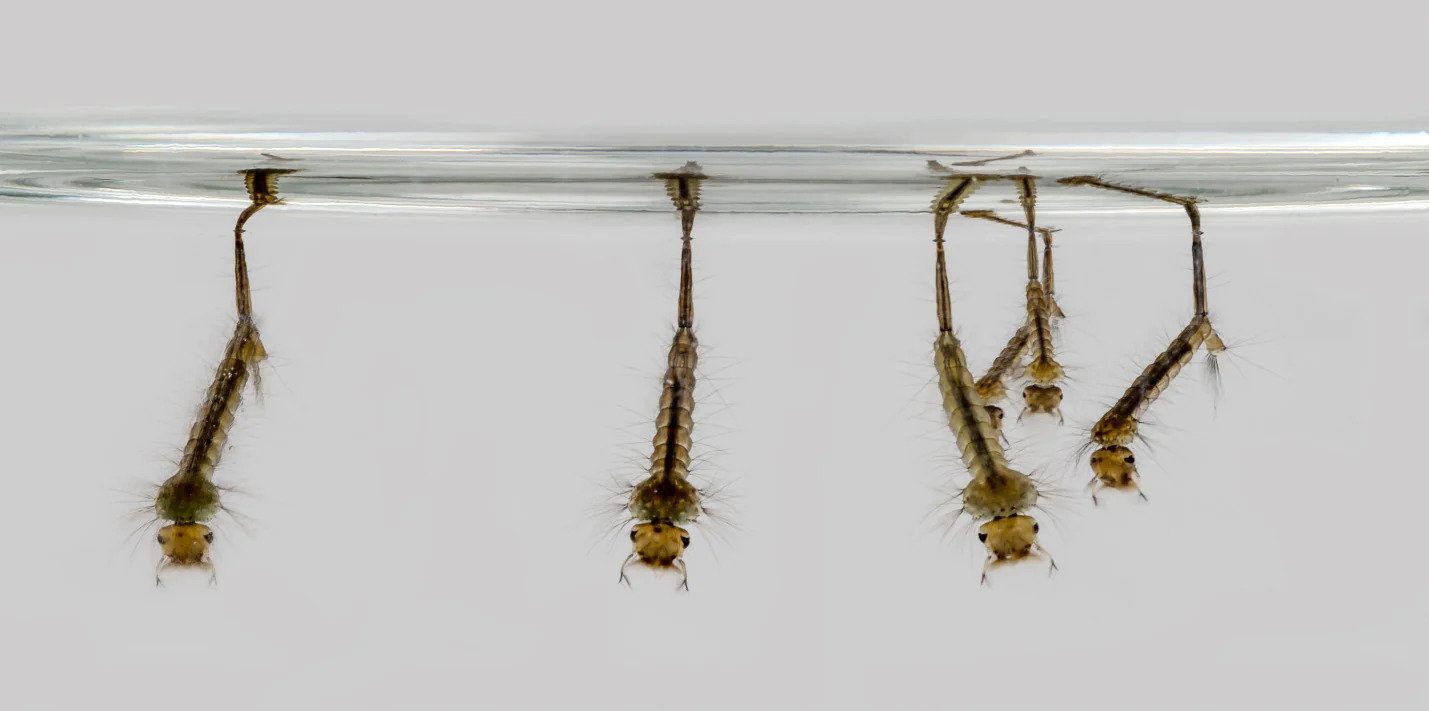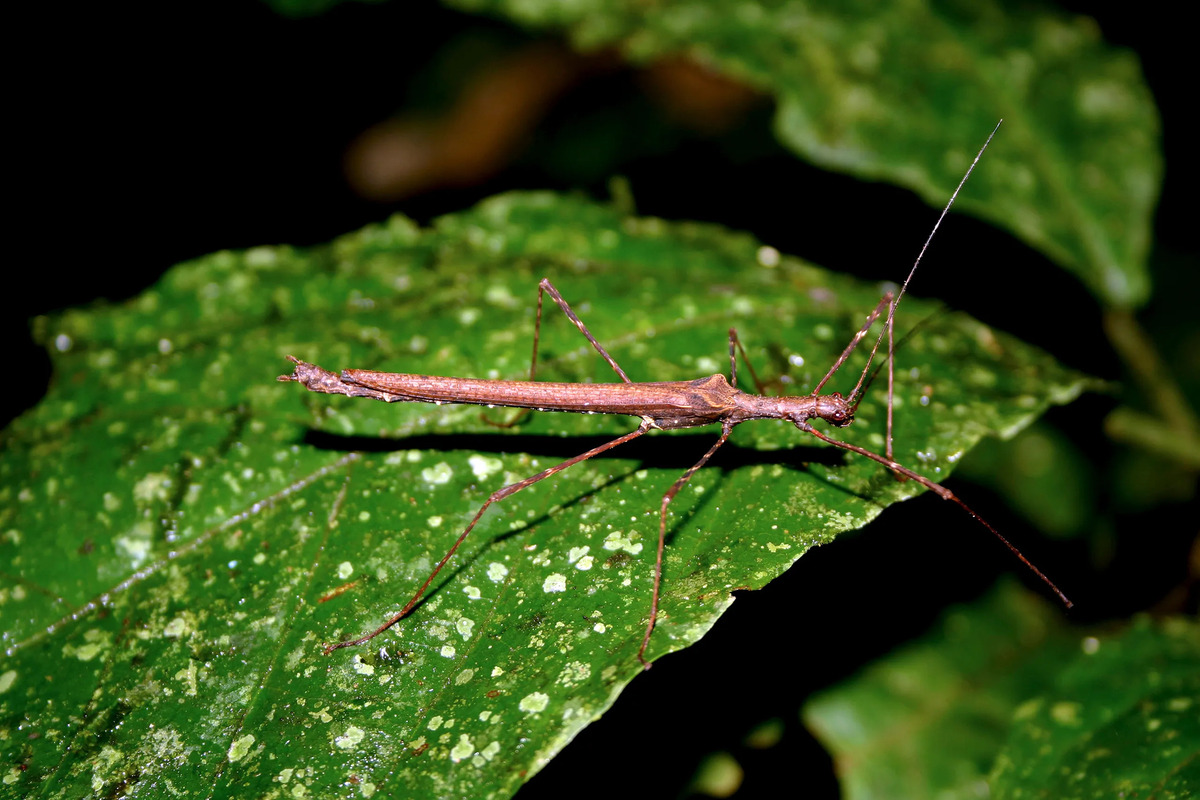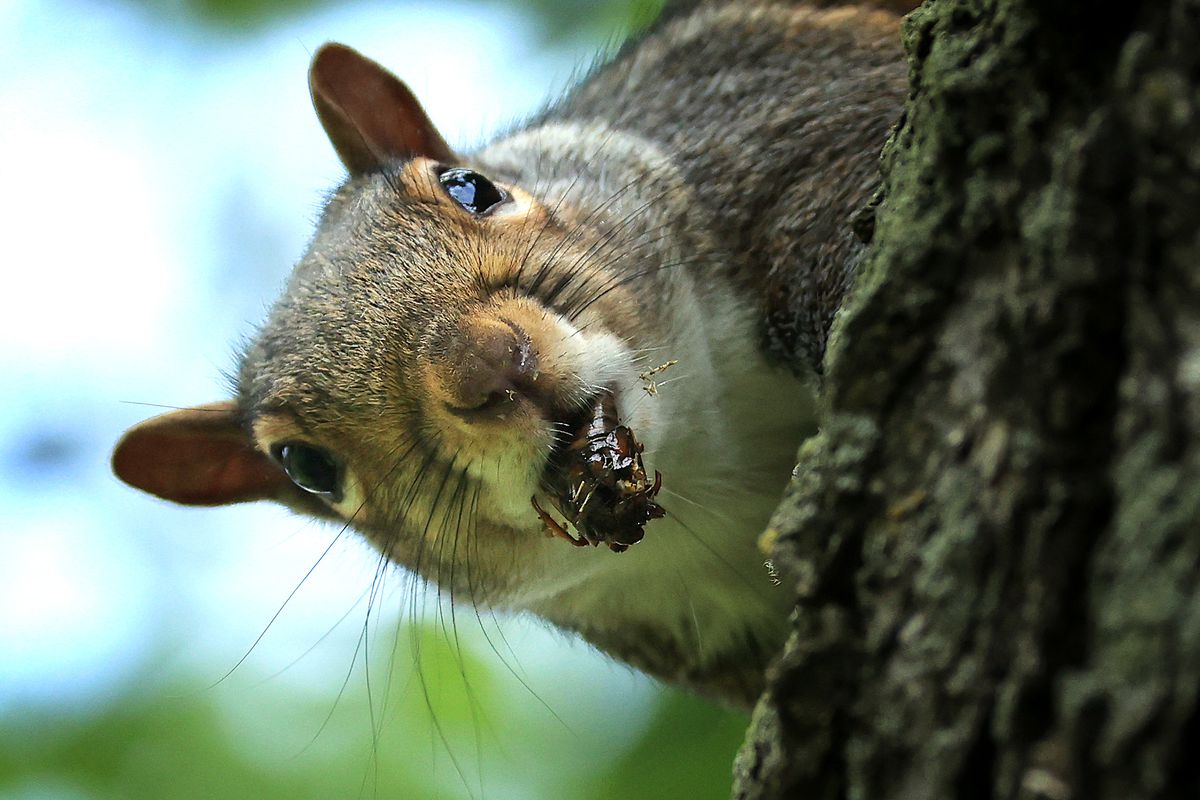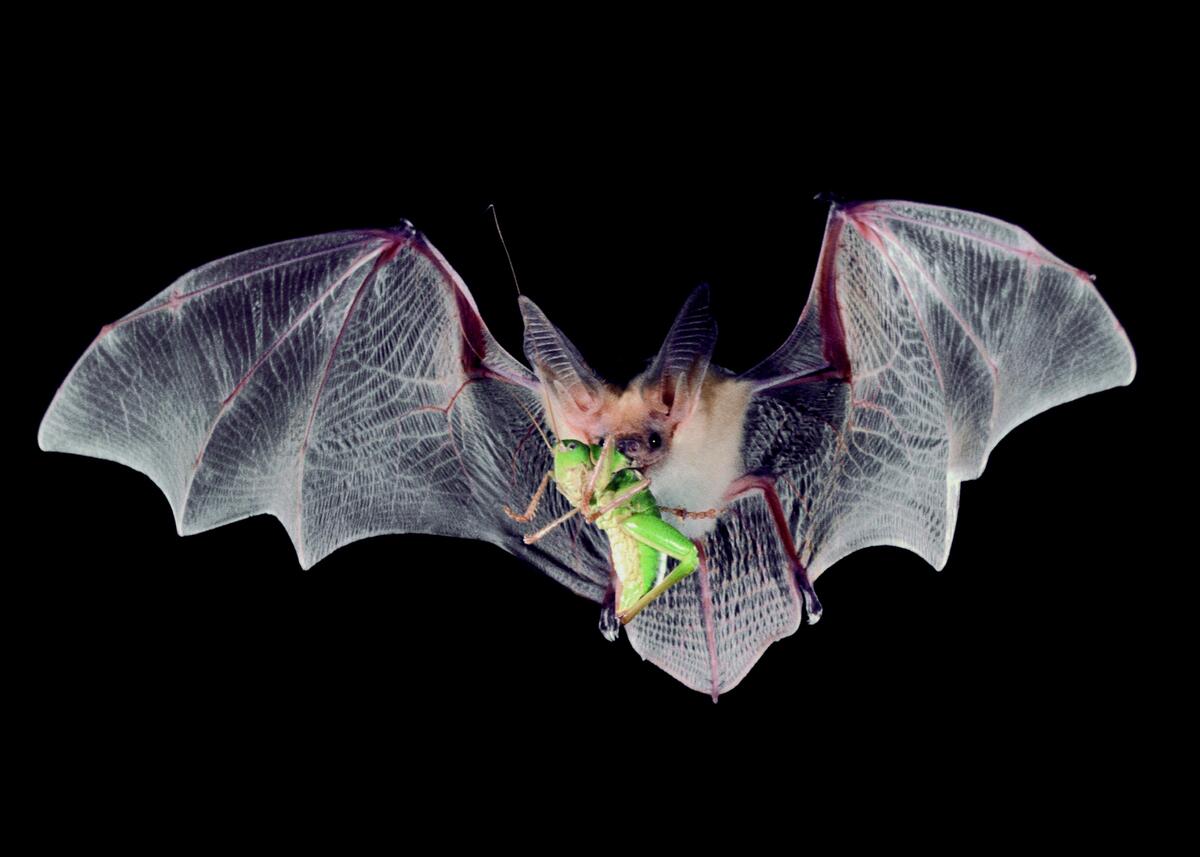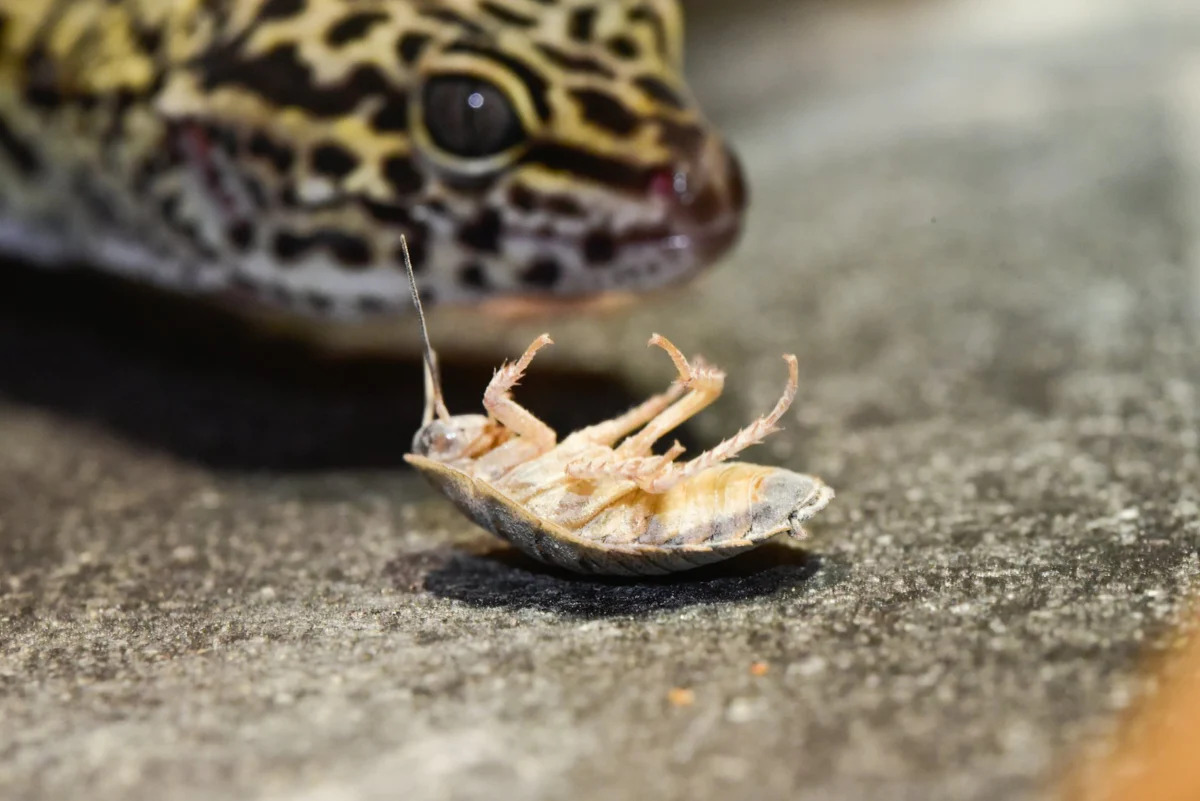Home>Gardening News and Trends>Latest News>What Do Insects In The Desert Eat
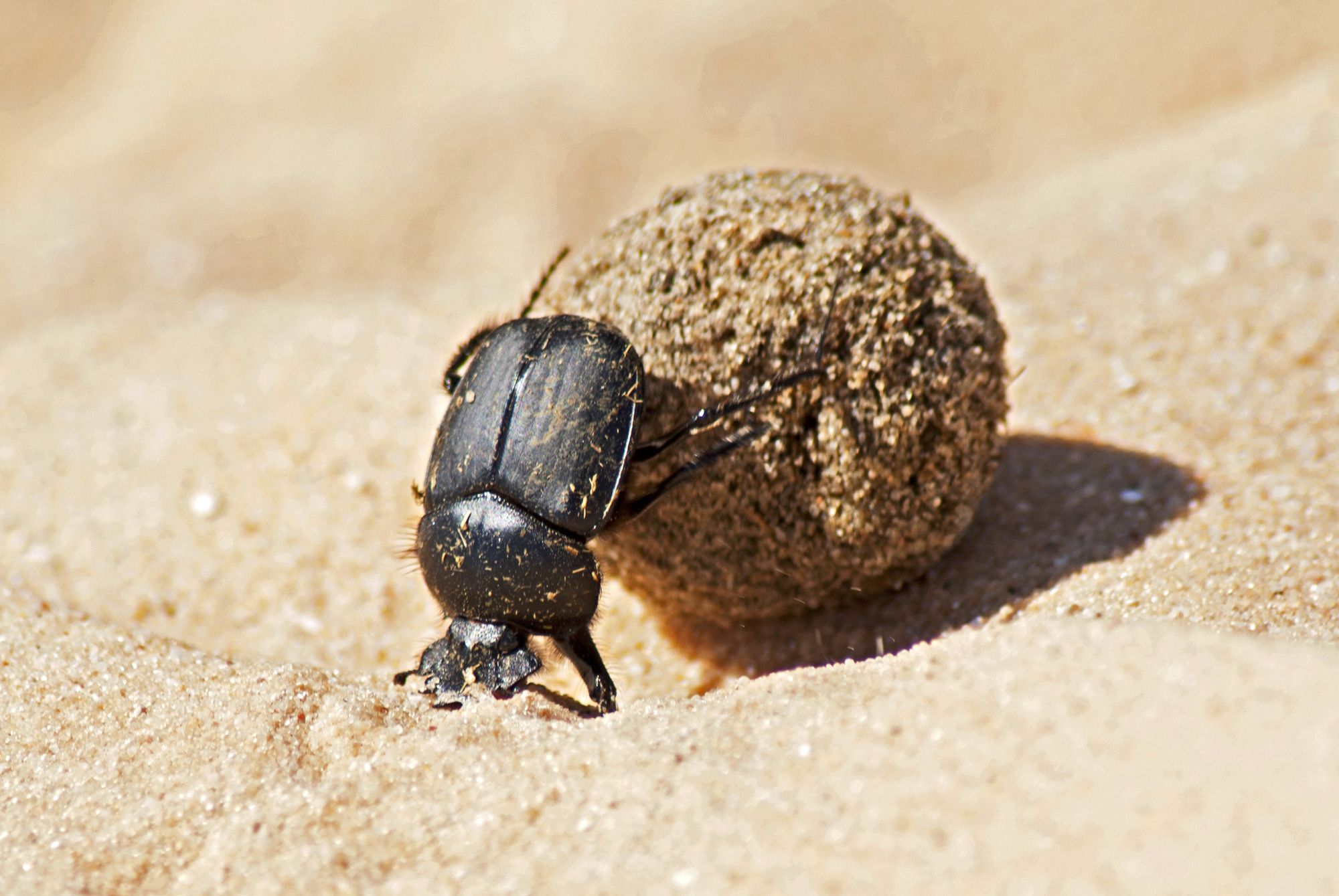

Latest News
What Do Insects In The Desert Eat
Published: December 3, 2023
Stay updated with the latest news about what insects in the desert eat. Discover fascinating facts and insights into the diets and survival strategies of desert-dwelling insects.
(Many of the links in this article redirect to a specific reviewed product. Your purchase of these products through affiliate links helps to generate commission for Chicagolandgardening.com, at no extra cost. Learn more)
Table of Contents
- Introduction
- The Role of Insects in the Desert Ecosystem
- Adaptive Feeding Strategies of Desert Insects
- Plant Matter as a Food Source for Desert Insects
- Animal Matter as a Food Source for Desert Insects
- Opportunistic Feeding Habits of Desert Insects
- Decomposition and Scavenging by Desert Insects
- Predation and Parasitism among Desert Insects
- Conclusion
Introduction
The desert is a harsh and unforgiving environment, characterized by its extreme temperatures, scarcity of water, and limited vegetation. Despite these harsh conditions, insects have managed to thrive and adapt to this unique ecosystem. Insects play a crucial role in the desert ecosystem as pollinators, decomposers, and as a source of food for other animals. In this article, we will explore the fascinating world of desert insects and their dietary habits.
The desert, with its dry and arid climate, presents numerous challenges for survival. However, insects have evolved remarkable adaptive strategies to contend with these harsh conditions. One of the key aspects of their survival strategy is their ability to find and utilize a variety of food sources. By examining their feeding habits and preferences, we can gain insights into the delicate balance of life in the desert.
Desert insects have adapted to consume a wide range of food sources, including plant matter, animal matter, and even engaging in opportunistic feeding. Their ability to extract nutrients from these limited resources allows them to thrive in the desert ecosystem. Understanding their feeding habits can provide valuable insights into the overall dynamics of the desert ecosystem.
So, what do insects in the desert eat? Let’s explore the various dietary strategies employed by these resilient creatures and discover the wonders of their adaptive feeding habits.
The Role of Insects in the Desert Ecosystem
Insects, despite their small size, play a vital role in the desert ecosystem. They are considered keystone species, meaning that their presence or absence has a significant impact on the overall functioning of the ecosystem. Let’s explore some of the key roles insects play in the desert:
- Pollinators: Insects such as bees, butterflies, and beetles are important pollinators in the desert. They transfer pollen from the male reproductive organs of plants to the female reproductive organs, enabling the process of fertilization and subsequent seed production. Without these pollinators, many desert plants would not be able to successfully reproduce.
- Decomposers: Insects, particularly beetles and flies, play a crucial role in the decomposition process. They break down organic matter like dead plants and animals, contributing to nutrient recycling in the ecosystem. This decomposition process helps replenish the soil and provide essential nutrients for the growth of desert vegetation.
- Food source for other animals: Insects serve as a primary food source for many desert animals, including birds, reptiles, and mammals. Their abundance and diversity provide a critical energy source for the higher trophic levels in the food chain. Without insects, these animals would struggle to find enough food to survive.
- Seed dispersers: Some desert insects, such as ants, play a role in seed dispersal. They collect seeds and carry them to new locations, aiding in the distribution and germination of plants. This process is essential for plant propagation and helps maintain biodiversity in the desert.
- Soil aeration: Insects like termites and ants create intricate burrow systems, which help aerate the soil. This improves soil structure, water infiltration, and nutrient availability, benefiting plant growth and overall ecosystem health.
Overall, insects play a fundamental role in maintaining the delicate balance of the desert ecosystem. They contribute to the pollination of plants, the decomposition of organic matter, the food web, seed dispersal, and even soil health. Without insects, the desert ecosystem would suffer significant disruptions, affecting the survival of many other organisms in the desert.
Adaptive Feeding Strategies of Desert Insects
Desert insects have evolved a variety of feeding strategies to meet the challenges posed by their arid environment. These adaptive feeding strategies allow them to make the most of the limited food resources available. Let’s explore some of these strategies:
- Specialized Mouthparts: Many desert insects have evolved specialized mouthparts that enable them to extract moisture and nutrients from different food sources. For example, some beetles have long, slender mouthparts that allow them to access nectar from deep within flowers, while others have strong mandibles for chewing through tough plant material.
- Water Conservation: Desert insects have developed mechanisms to conserve water, as water availability is often scarce in arid regions. Some insects are able to obtain moisture from the plants they consume, while others have adapted to extract water from their surroundings, such as dew or even their own metabolic processes.
- Nocturnal Feeding: Many desert insects are active during the cooler nighttime hours to avoid the scorching heat of the day. This allows them to feed on plants and other food sources without risking dehydration or overheating.
- Stored Food: Some desert insects have the ability to store food for extended periods, allowing them to survive through periods of food scarcity. They may lay eggs on or near food sources or create underground chambers for storing food, ensuring a steady supply of nutrients during unfavorable conditions.
- Scavenging: Insects in the desert often rely on scavenging as a food source. They feed on decaying plant and animal matter, taking advantage of the nutrients present in decomposing organic material. This adaptation allows them to capitalize on available resources and minimize competition for limited food sources.
- Carnivorous Behavior: Some desert insects have evolved to be carnivorous, preying on other insects or small animals. These predators have sharp mouthparts or specialized feeding structures that enable them to capture and consume their prey. This adaptation allows them to obtain the necessary nutrients from animal matter when plant resources are limited.
These adaptive feeding strategies not only highlight the resilience and resourcefulness of desert insects but also contribute to the overall stability and survival of the desert ecosystem. By making the most of the available food resources and adapting to the harsh environmental conditions, desert insects have flourished in an otherwise challenging habitat.
Plant Matter as a Food Source for Desert Insects
Plant matter, despite its scarcity in the desert, serves as a vital food source for many insects. These resilient creatures have evolved various adaptations to feed on the sparse vegetation available. Let’s explore some of the ways desert insects utilize plant matter:
- Xerophagy: Xerophytes are plants that have adapted to survive in arid conditions, and desert insects have developed the ability to feed on these plants. They consume the tough leaves, stems, and even spines of xerophytes, which provide them with essential nutrients and moisture.
- Nectar Feeding: Many desert insects, such as bees, butterflies, and moths, are nectar feeders. They have long mouthparts, like proboscis, which allows them to access the nectar from flowers. Nectar is a rich source of carbohydrates and provides vital energy for these insects.
- Phloem Sap Feeding: Some desert insects have developed specialized mouthparts that allow them to feed on the phloem sap of plants. The phloem sap is rich in sugars and other nutrients, providing a valuable food source for these insects. Aphids and leafhoppers are examples of insects that feed on phloem sap.
- Herbivory: Insects such as grasshoppers, caterpillars, and beetles are herbivores, feeding directly on plant leaves, stems, or fruits. They have chewing mouthparts that enable them to consume plant tissue. These insects may target specific plant species or consume a variety of plants, depending on their adaptability and the availability of food.
- Seeds and Pollen: Some desert insects play a role in seed predation or seed dispersal. They consume seeds, either as a primary food source or incidentally while feeding on other parts of plants. Additionally, certain insects feed on pollen, contributing to the pollination process and ensuring the reproduction of desert plant species.
The ability of desert insects to extract nutrients from plant matter demonstrates their efficient utilization of limited resources. By feeding on plant matter, these insects not only derive sustenance but also contribute to the dispersal of seeds, the pollination of flowers, and the overall health and survival of desert plant species.
Animal Matter as a Food Source for Desert Insects
While plant matter serves as a primary food source for many desert insects, some species have adapted to include animal matter in their diet. These insects have developed various feeding strategies to obtain nutrients from the limited animal resources available in the desert. Let’s explore how desert insects utilize animal matter as a food source:
- Carnivorous Predation: Some desert insects are predators, hunting and feeding on other insects or small animals. They have evolved specialized mouthparts or trapping structures to capture and consume their prey. Examples of such insects include mantises, assassin bugs, and certain beetles. By preying on other animals, these insects obtain essential proteins and nutrients not easily found in plant matter.
- Scavenging: In the harsh desert environment, animal carcasses or decaying organic matter can be rare sources of food. Certain desert insects, such as carrion beetles and flesh flies, scavenge on dead animals, making use of the nutrients present in the decomposing organic material. This adaptation allows them to survive in the arid conditions and take advantage of available resources.
- Parasitism: Some desert insects have evolved to be parasitic, feeding on the blood or body fluids of other animals. For instance, fleas, ticks, and some species of flies parasitize mammals and reptiles in the desert. These parasites have specialized mouthparts to pierce the skin and extract blood, which serves as their primary source of nutrients.
- Coprophagy: Coprophagous insects feed on the feces of animals in the desert. They extract nutrients from the fecal matter, which still contains undigested plant material and other organic matter. Dung beetles are a well-known example of insects that play a role in recycling animal waste and contributing to nutrient cycling in the ecosystem.
- Opportunistic Feeding: In the desert, some insects have adapted to take advantage of occasional animal matter. For instance, certain beetles may feed on dead insects or the remains of larger animals that they come across. This opportunistic behavior allows them to supplement their diet with animal matter whenever it becomes available.
The inclusion of animal matter in their diet provides desert insects with additional sources of essential nutrients and energy. By incorporating animal matter into their feeding strategies, these insects demonstrate their adaptability in utilizing diverse food resources in the challenging desert ecosystem.
Opportunistic Feeding Habits of Desert Insects
In the harsh desert environment where food resources can be scarce and unpredictable, some desert insects have developed opportunistic feeding habits. These insects have adapted to take advantage of various food sources that may present themselves sporadically. Let’s explore the opportunistic feeding habits of desert insects:
- Carrion Feeding: Insects such as beetles and flies are known to feed on carrion – the decaying remains of dead animals. These opportunistic feeders play an important role in the decomposition process by consuming the organic matter and recycling nutrients back into the ecosystem.
- Scavenging: Many desert insects, including ants and certain beetles, are adept scavengers. They actively search for and exploit any available sources of food, including dead insects, plant matter, or even partially decomposed animal carcasses. By taking advantage of these resources, they maximize their chances of survival in the unpredictable desert environment.
- Floral Resource Exploitation: Desert insects can exploit various floral resources when they are in bloom. They may visit multiple flowering plants to feed on nectar or collect pollen, contributing to the pollination process. This opportunistic feeding behavior allows them to obtain important nutrients when the floral resources are abundant and accessible.
- Fruit Consumption: Some desert insects opportunistically feed on fruits and seeds produced by plants. They may consume ripe fruits and even assist in seed dispersal by ingesting the fruits and later excreting the seeds in different locations. This feeding behavior ensures that they benefit from this seasonal food source and contribute to the dispersal and survival of the plant species.
- Feeding on Plant Sap: Insects like aphids and leafhoppers feed on plant sap by piercing the plant tissues and extracting the nutrient-rich fluids. These insects take advantage of the abundance of plant sap during certain periods and exploit this resource as an opportunistic food source.
- Exudate Feeding: Some desert insects feed on exudates produced by plants or other organisms. For instance, certain insects may feed on the sugary secretions known as honeydew, which are produced by other insects or even plants themselves. This opportunistic feeding behavior allows them to obtain necessary nutrients during periods of resource scarcity.
These opportunistic feeding habits of desert insects demonstrate their adaptability and resourcefulness in obtaining food. By taking advantage of sporadic food sources, these insects increase their chances of survival in the challenging desert environment.
Decomposition and Scavenging by Desert Insects
Decomposition and scavenging are important ecological processes in the desert, and desert insects play a crucial role in these processes. Despite the harsh conditions, these resilient creatures have evolved to effectively break down and recycle organic matter in the ecosystem. Let’s explore how desert insects contribute to decomposition and scavenging:
- Consuming Dead Plants and Animals: Desert insects, such as beetles and flies, are often the first to colonize dead plants and animal carcasses. They assist in breaking down these organic materials by feeding on them. By consuming decaying plant and animal matter, these insects speed up the decomposition process and aid in the recycling of nutrients.
- Feeding on Decomposing Organic Matter: Insects like carrion beetles, dung beetles, and certain fly species specialize in feeding on decomposing organic matter. They have adapted to locate and exploit these resources, which may consist of animal droppings, fallen leaves, or decaying vegetation. They consume and process this organic material, facilitating its breakdown and nutrient release into the soil.
- Accelerating Nutrient Cycling: Desert insects contribute to nutrient cycling by consuming organic matter and excreting waste products. As they feed and digest organic material, they release nutrient-rich feces, known as frass. This frass contains valuable nutrients that are returned to the soil, promoting the growth and health of desert plants.
- Cleaning Up Dead Insects: Insects also contribute to decomposition and scavenging by consuming dead insects. In the desert, where smaller insects often face high mortality rates, other insects will scavenge on their remains. This process helps to reduce the accumulation of dead insect bodies and recycles their nutrients back into the ecosystem.
- Assisting in Pollination: Certain desert insects, such as bees and flies, play a dual role in scavenging and pollination. As they feed on flowers for nectar or pollen, they inadvertently come into contact with flower parts, aiding in pollination. This allows them to contribute to the decomposition process while also helping to ensure the reproduction of desert plant species.
- Promoting Soil Health: By breaking down organic matter and recycling nutrients, desert insects improve soil health in the desert ecosystem. Their activities increase nutrient availability, soil fertility, and water-holding capacity, ultimately benefiting the growth and survival of plants in these arid environments.
The decomposition and scavenging activities of desert insects contribute to the maintenance of the delicate balance of the desert ecosystem. They play a vital role in recycling nutrients, promoting soil health, and facilitating nutrient cycling, ultimately sustaining life in these challenging environments.
Predation and Parasitism among Desert Insects
In the harsh desert ecosystem, predation and parasitism are prevalent among desert insects. These behaviors play important roles in shaping the dynamics of the desert food web and maintaining population balance. Let’s explore the concepts of predation and parasitism among desert insects:
- Predation: Predation is the act of one organism, the predator, hunting and consuming another organism, the prey. Desert insects exhibit various predatory strategies to capture and feed on their prey. Examples of predatory insects in the desert include mantises, predatory beetles, and certain wasps. These predators often have specialized adaptations such as sharp mouthparts or robust mandibles to efficiently capture and consume their prey.
- Ambush Predation: Some desert insects use ambush tactics to capture their prey. They camouflage themselves in their surroundings, lying in wait for unsuspecting prey to pass by. As the prey comes within striking distance, these predators swiftly seize and immobilize their prey to consume it. This method of predation allows them to conserve energy and maximize their chances of a successful hunt.
- Parasitism: Parasitism occurs when one organism, the parasite, benefits at the expense of another organism, the host. In the desert, certain insects have evolved to be parasitic, taking advantage of other insects or even larger animals as hosts. Parasitic insects, such as fleas, ticks, mites, and certain fly species, feed on the blood, tissues, or body fluids of their hosts. They utilize specialized mouthparts or structures to pierce the host’s skin and extract the necessary nutrients.
- Host Manipulation: Some parasitic desert insects exert control over their hosts’ behavior to ensure their own survival and reproduction. For example, certain parasitic wasps lay eggs inside other insects, and the larvae then develop by feeding on the host’s internal tissues. The larvae manipulate the host’s behavior, often causing it to protect the developing larvae until they are ready to emerge.
- Parasitoidism: Parasitoid insects are similar to parasites but differ in that they eventually kill their hosts. They lay their eggs inside or on the host, and the larvae develop by consuming the host’s tissues. The host is typically killed as the parasitoid larvae emerge. Several parasitoid wasps and flies exhibit this behavior in the desert, controlling populations of other insects and helping to maintain overall ecosystem balance.
- Regulating Prey Populations: Predation and parasitism among desert insects play a crucial role in regulating prey populations. By consuming other insects or utilizing them as hosts, these predators help control the numbers of prey species, preventing them from reaching destructive population levels. This predation pressure contributes to maintaining balance within the desert ecosystem.
Predation and parasitism are essential ecological processes among desert insects. These behaviors shape the population dynamics, regulate prey populations, and contribute to the intricate balance of the desert food web.
Conclusion
Desert insects have evolved remarkable adaptations and feeding strategies to survive in the challenging and often inhospitable desert environment. Their ability to make the most of limited food resources is truly fascinating. From plant matter to animal matter, and even to scavenging and opportunistic feeding, these resilient creatures have found creative ways to obtain nutrients and thrive in the desert ecosystem.
Insects play crucial roles in the desert ecosystem, acting as pollinators, decomposers, and a significant food source for other animals. Their feeding habits and abilities contribute to maintaining the delicate balance of the desert ecosystem. By extracting nutrients from various food sources such as xerophytes, nectar, phloem sap, carrion, or even through predation and parasitism, desert insects ensure the flow of energy and nutrients within the ecosystem.
Furthermore, desert insects contribute to decomposition and scavenging, speeding up the breakdown of dead plant and animal matter, and recycling nutrients back into the ecosystem. Their activities promote soil health, nutrient cycling, and the overall health of desert vegetation. The role of desert insects in the ecosystem extends beyond their dietary habits, with their activities shaping the dynamics of the desert food web and helping to regulate population levels.
Understanding the feeding strategies of desert insects provides valuable insights into the remarkable adaptability and resilience of these tiny organisms. It highlights the intricate web of interactions within the desert ecosystem and emphasizes the importance of conserving and protecting these habitats for the survival of both insects and the broader array of species that depend on them.
In conclusion, the adaptive feeding strategies of desert insects demonstrate their resourcefulness and ability to survive and thrive in a harsh and unpredictable environment. Their ability to extract nutrients from various food sources contributes to the ecological stability and functioning of the desert ecosystem. As we continue to explore and study these remarkable creatures, we gain greater knowledge and appreciation for the complex interconnections that sustain life in the desert.
